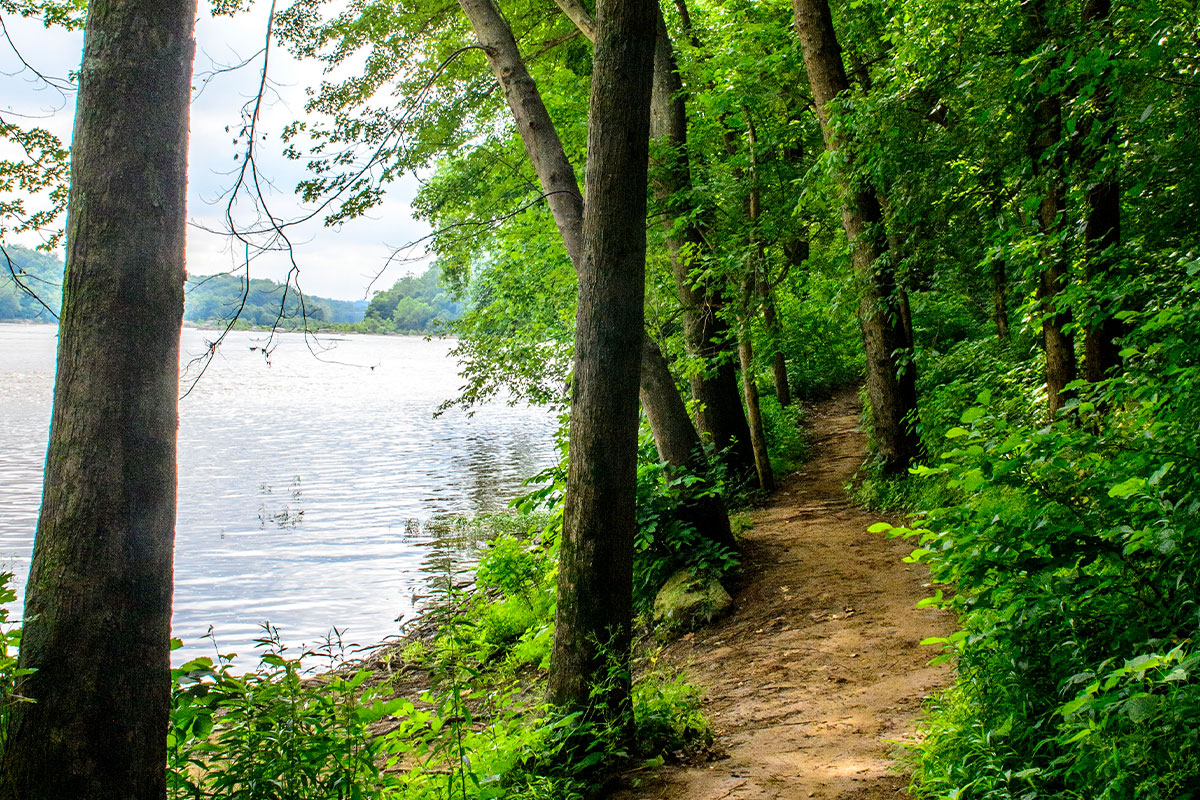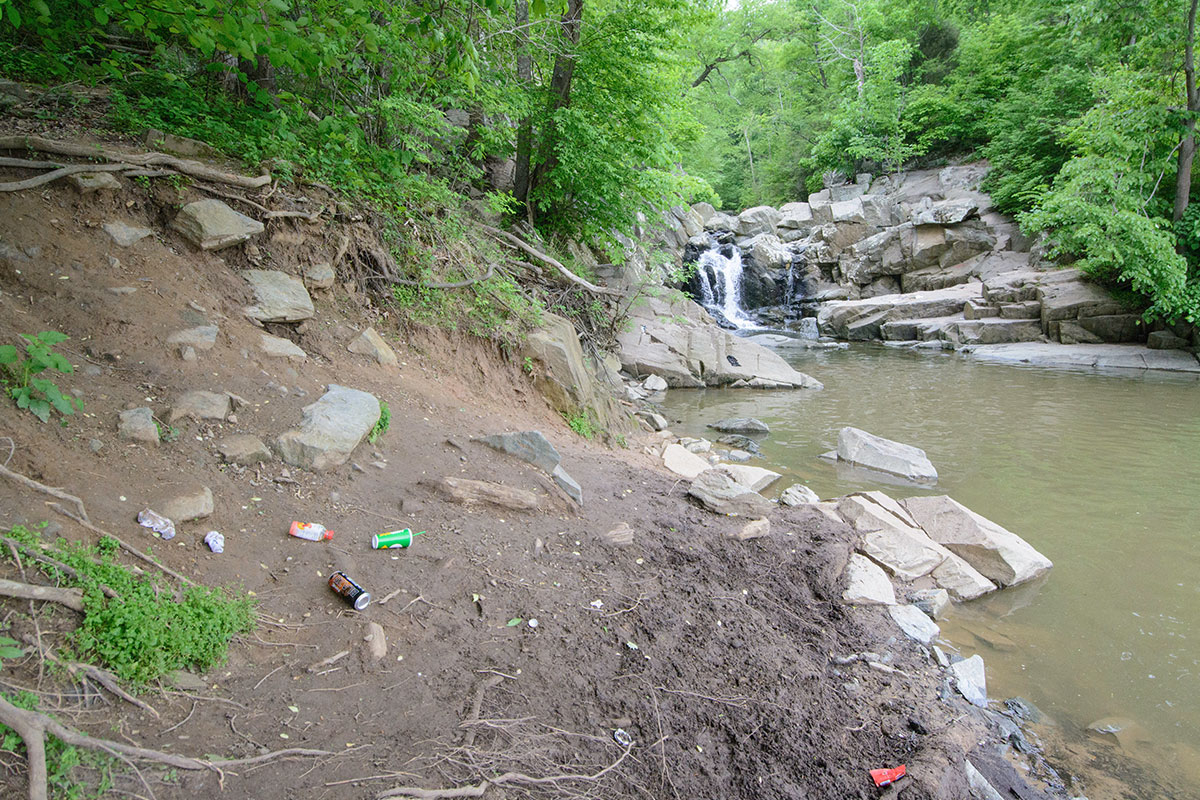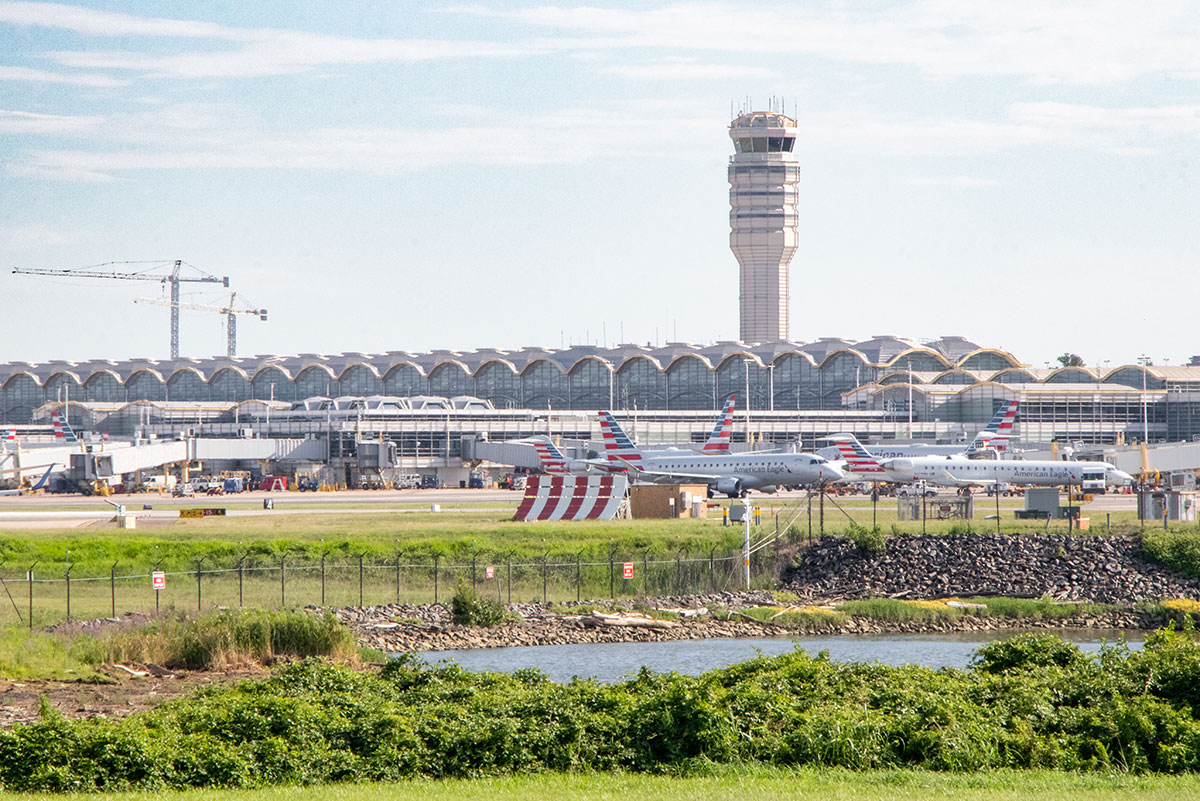
Consider this a warning: stop littering at parks.
Known for scenic views, Northern Virginia parks are meant to be a reprieve from the hustle and bustle of daily life. Scott’s Run Nature Preserve is one of those exceptional locations that does just that. Right off of Georgetown Pike in McLean, it is a prime example of what a healthy forest looks like in Fairfax County, according to local ecologist Erin Stockschlaeder.
The property has a grove of ancient hemlock trees that serve as a reminder that the area was once within a subarctic climate and a stream that travels east from the Beltway area to create a picturesque waterfall that enters the Potomac River.
But a recent trend of rule-breaking within the preserve’s property is leading to the land’s potential decay.
Litter, unauthorized swimming, alcohol consumption and trespassing are all violations that have been frequently reported at Scott’s Run, and continue to be a nuisance to neighbors, hikers and the park authority employees this summer.

On Saturday, June 8, the Fairfax County Police Department arrested six people and issued serving summons to another nine, prompting a press release on following the rules and the department’s increase of enforcement throughout the season.
According to Judy Pedersen, public information officer for Fairfax County Park Authority (FCPA), the organization has been investing more funding in cracking down on the issues for the past three years, but, these problems continue to arise.
“We’re finding that after a weekend of misuse, we are having to collect between 25 and 40 bags of trash,” Pedersen says.
Not only is this a violation of the preserve’s rules and regulations, it’s also harmful to the species that thrive in its environment.
“Scott’s Run is a part of a larger system called the Potomac Gorge which includes a lot of public land in both Virginia and Maryland,” says Kristen Sinclair, a local ecologist who works with the Fairfax County government. She says the fauna and flora in the area are sensitive to disturbance, such as when visitors drift off the trail and subsequently damage a habitat or the species itself.
“Sometimes the smallest acts can have more of an impact than most people realize,” she says. “There are special habitats that include things like boulder fields, rock outcrops and the scoured riverbank that are considered to be globally rare. We need people to be aware that it’s a fragile area and they should leave it just as it was when they came.”
Although, Pedersen says, there is a very active volunteer community that helps advocate for and continue to protect the preserve, as well as outreach programs that aim to educate the public about the preserve’s importance, the park authority still sees a minority of younger visitors abusing the land.

The location’s popularity has grown to welcome several hundred visitors each day throughout the summer, but visitors of high school and college age have been found by the park authority and police department to be some of the most common offenders of obvious violations.
“A lot of them come wearing bathing suits and are carrying towels and coolers,” Sinclair says. “It’s problematic because it’s becoming more of a social scene rather than a nature scene.”
Plus, it’s against the law. If a person is found to be swimming in the area, they can be charged a fine of up to $250. Wherever violators attempt to swim, the Potomac River’s currents can pull them rapidly downstream and under water, causing them to sustain life-threatening injuries, or to drown. Sinclair also emphasizes that the water is highly polluted, the surrounding rocks are slippery and danger can happen at any moment.
The area has become a hidden hot spot for underage drinking. Violators of that offense can be arrested and face a fine of up to $2,500.
The location has also created traffic issues due to its popularity, where many have been parking dangerously on the side of the road and overcrowding the area at what Pedersen referred to as a “blind curve,” in the road on Georgetown Pike, despite there being a designated parking area.

“It is a two-lane highway for much of the stretch there and it is really causing safety issues,” Pedersen says. And the location can’t simply provide more parking to alleviate the excess because it’s not just a park, it’s a natural resource.
“We always want to encourage people to come visit,” Pedersen says. “We just need them to obey the rules.”
But both ecologists and Pedersen are in agreement that they don’t want the preserve to be defined by the actions that have taken place to harm it. Rather, they want people to know that there are many who use the property correctly by enjoying it in its “pristine, beautiful and quiet aesthetic state,” Pedersen says.
“People go to Scott’s Run for a variety of great reasons,” Stockschlaeder adds. “It is a great place to go hiking and to discover new trails [off the Potomac Heritage Trail]. I always see people walking with their dogs or bringing their families to do nature walks, wildlife viewings and to enjoy spending time outdoors.”
Now it’s just a matter of making sure visitors continue to use it this way and don’t fall into bad habits leading to potential destruction of the area.
“We’re going to continue to write citations and do whatever it takes to make Scott’s Run a safe place for everybody,” Pedersen says.
For more information on Scott’s Run, visit fairfaxcounty.gov. // Scott’s Run: 7400 VA-193, McLean
For more park news, subscribe to our Parks & Rec newsletter.




